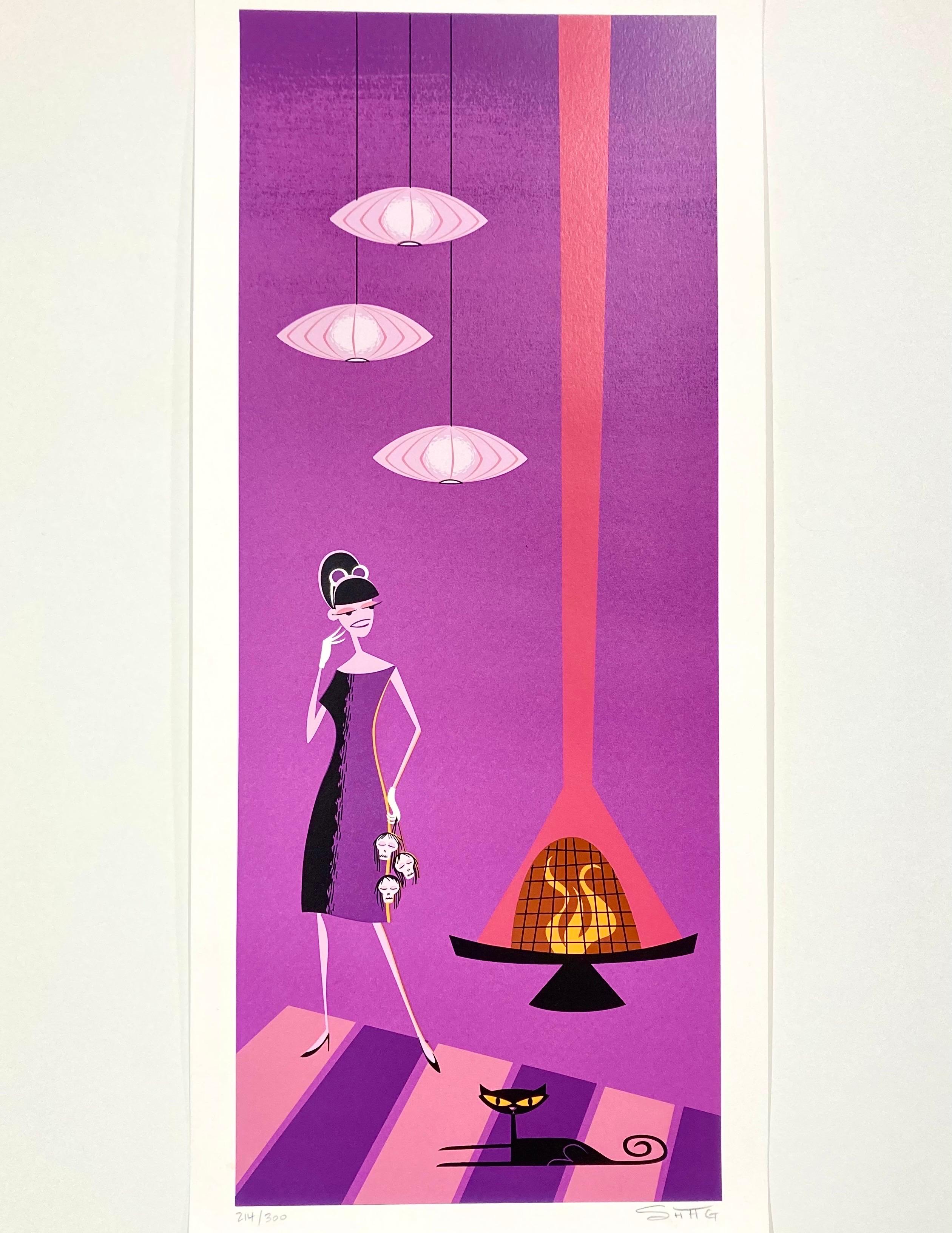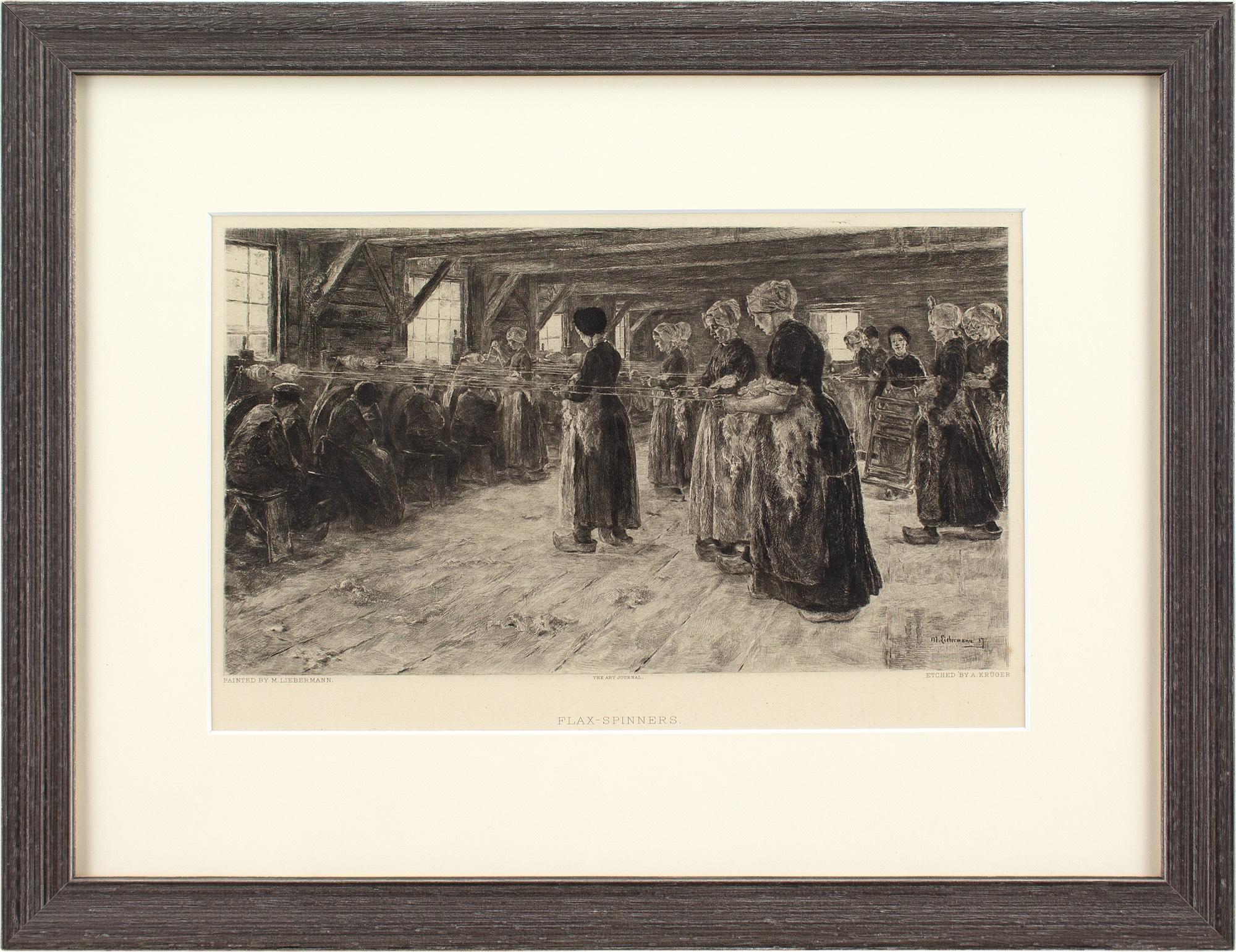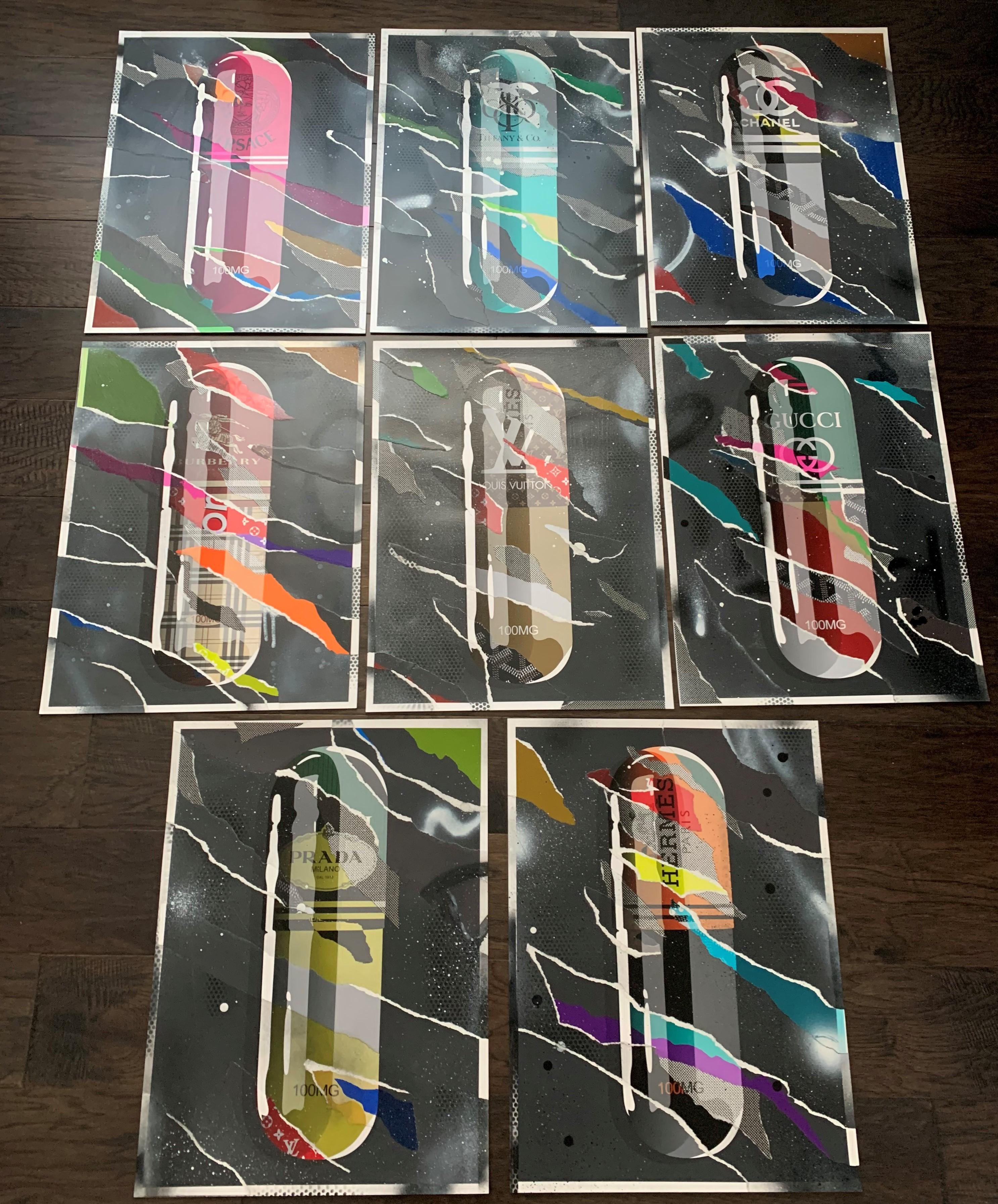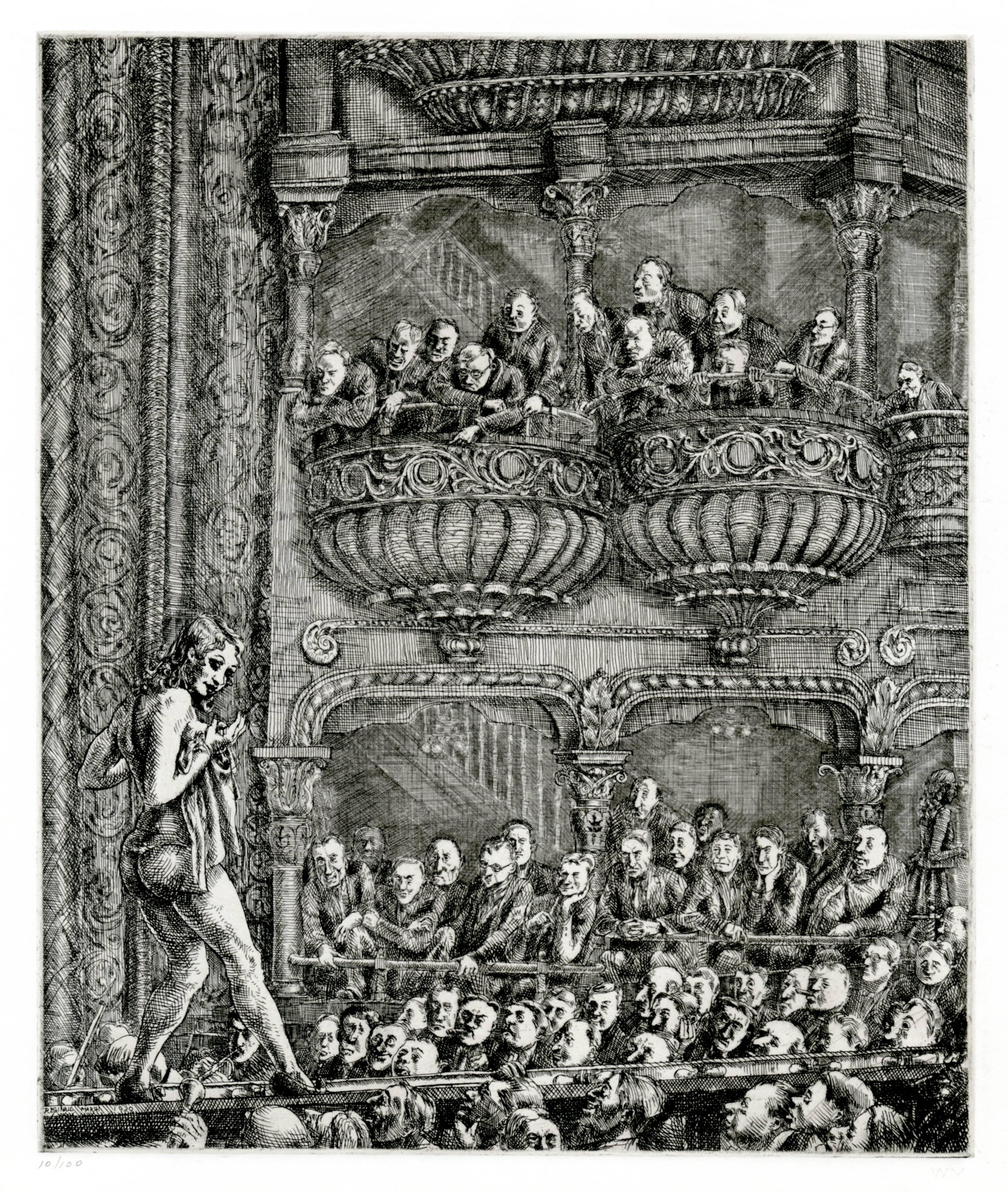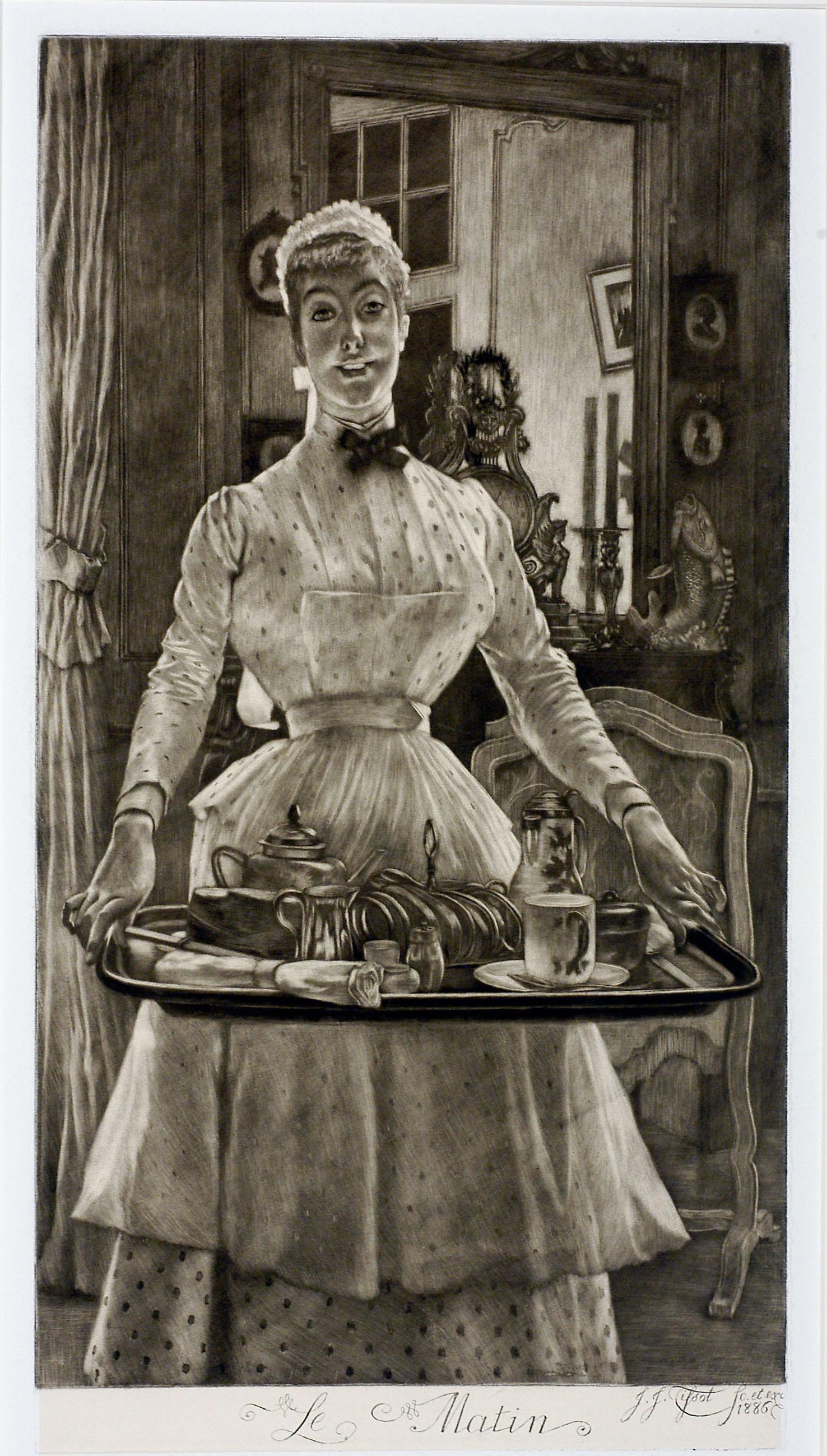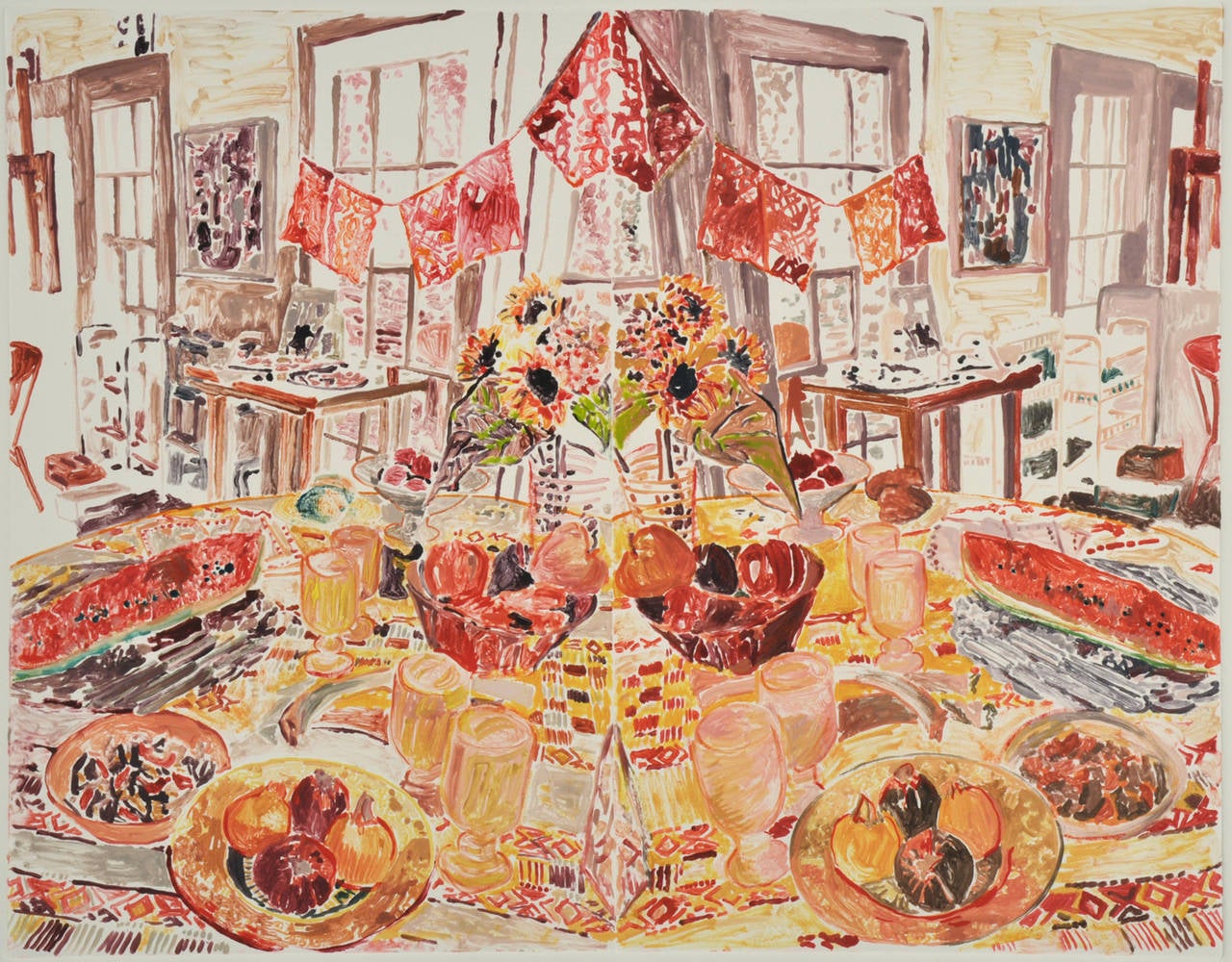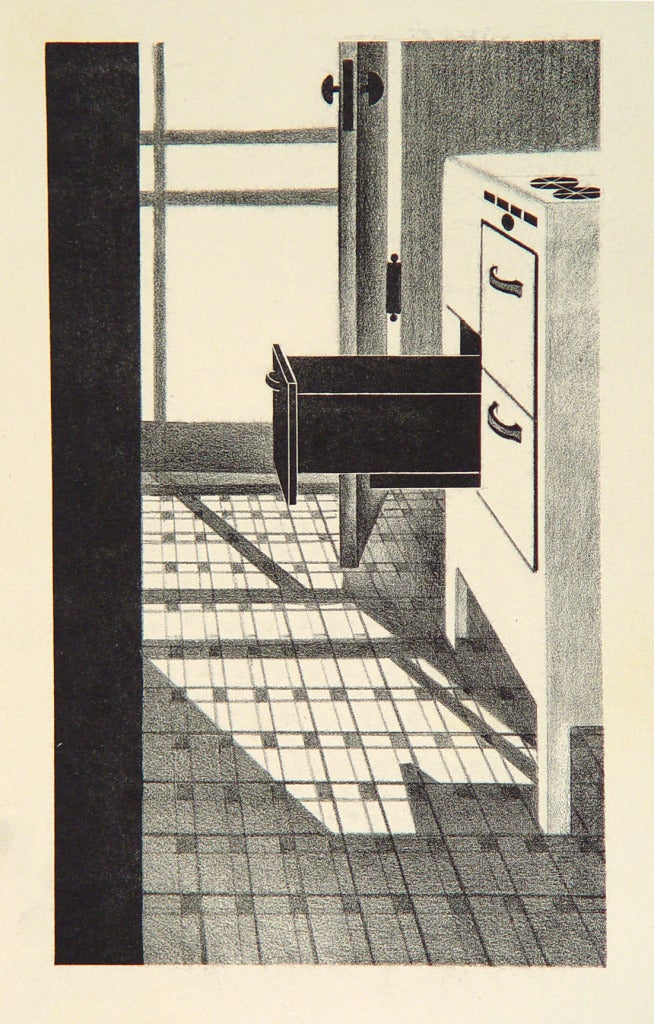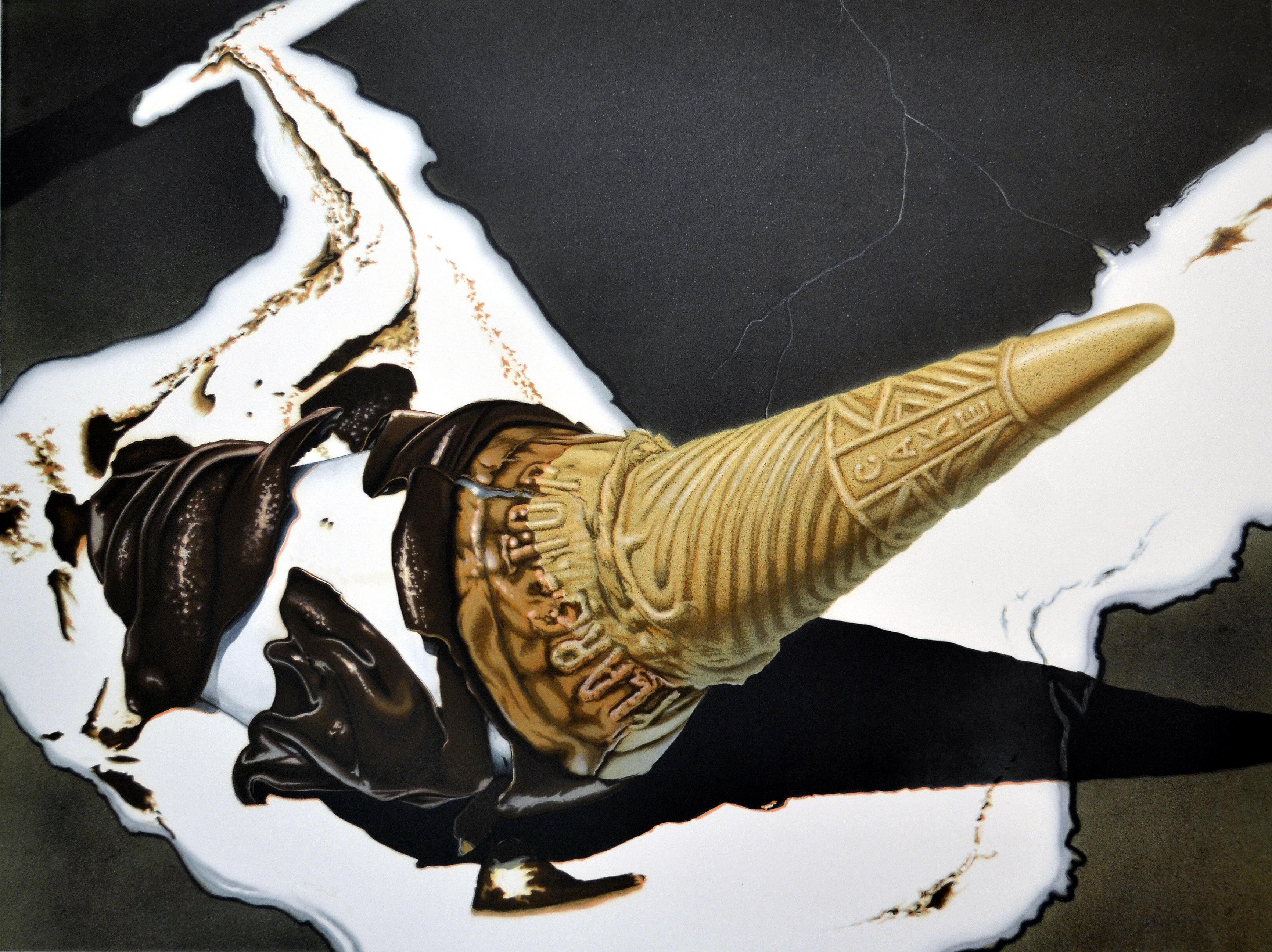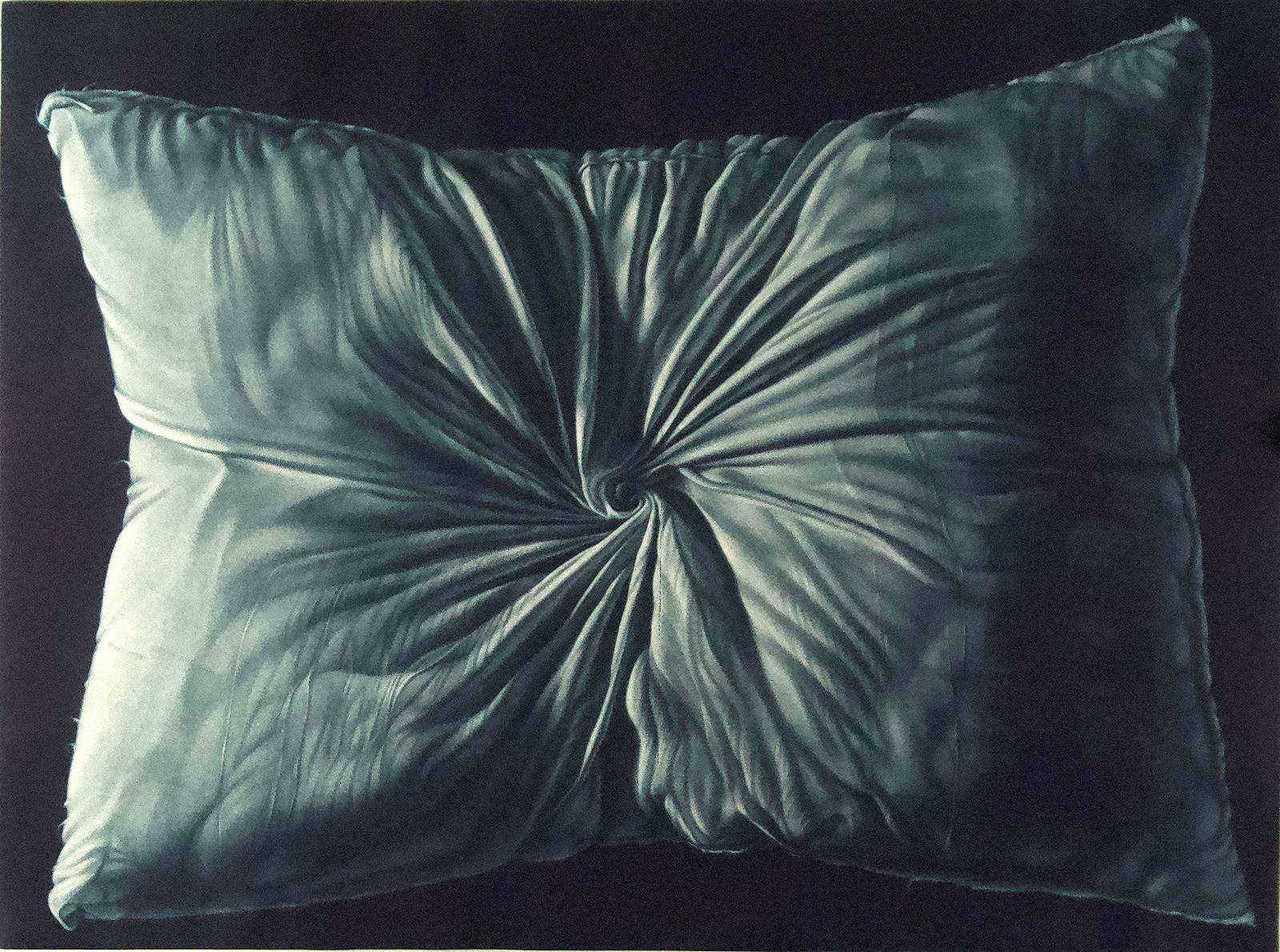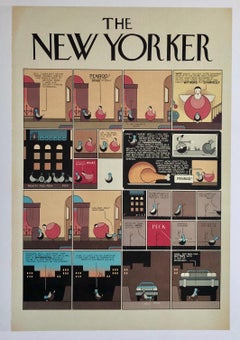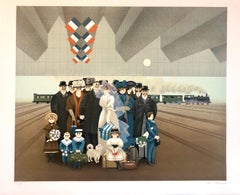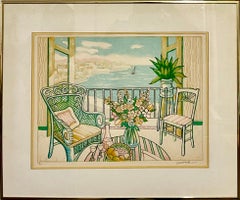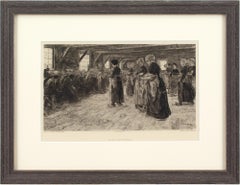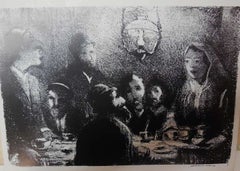
Soviet Jewish Interior print
View Similar Items
Want more images or videos?
Request additional images or videos from the seller
1 of 3
Anatoli Lvovich KaplanSoviet Jewish Interior print
About the Item
- Creator:Anatoli Lvovich Kaplan (1902 - 1980, Russian)
- Dimensions:Height: 9.5 in (24.13 cm)Width: 13 in (33.02 cm)
- Period:
- Condition:minor corner bumps.
- Gallery Location:Surfside, FL
- Reference Number:1stDibs: LU382107280
About the Seller
4.9
Platinum Seller
These expertly vetted sellers are 1stDibs' most experienced sellers and are rated highest by our customers.
Established in 1995
1stDibs seller since 2014
1,549 sales on 1stDibs
Typical response time: 1 hour
More From This SellerView All
- Chris Ware New Yorker Cartoonist Limited Edition Thanksgiving Print NYCBy Chris WareLocated in Surfside, FLThis is one print – printed in full color on 15" x 20" heavy cream-colored paper. It is from a limited edition series of 175, the portfolio is hand numbered and hand signed by Chris Ware. the individual prints are not. The page with the hand signature is included here as a photo for reference only it is not included in this sale. Franklin Christenson "Chris" Ware (born December 28, 1967), is an American cartoonist known for his Acme Novelty Library series (begun 1994) and the graphic novel Jimmy Corrigan, the Smartest Kid on Earth (2000) and Building Stories (2012). His works explore themes of social isolation, emotional torment and depression. He tends to use a vivid color palette and realistic, meticulous detail. His lettering and images are often elaborate and sometimes evoke the ragtime era or another early 20th-century American design style. Ware often refers to himself in the publicity for his work in self-effacing, even withering tones. He is considered by some critics and fellow notable illustrators and writers, such as Dave Eggers, to be among the best currently working in the medium; Canadian graphic-novelist Seth has said, "Chris really changed the playing field. After him, a lot of [cartoonists] really started to scramble and go, 'Holy [expletive], I think I have to try harder.'" While still a sophomore at UT, Ware came to the attention of Art Spiegelman, who invited Ware to contribute to Raw, the influential anthology magazine Spiegelman was co-editing with Françoise Mouly. Ware has acknowledged that being included in Raw gave him confidence and inspired him to explore printing techniques and self-publishing. His Fantagraphics series Acme Novelty Library defied comics publishing conventions with every issue. Ware's art reflects early 20th-century American styles of cartooning and graphic design, shifting through formats from traditional comic panels to faux advertisements and cut-out toys. Stylistic influences include advertising graphics from that same era; newspaper strip cartoonists Winsor McCay (Little Nemo in Slumberland) and Frank King (Gasoline Alley); Charles Schulz's post-WWII strip Peanuts and the cover designs of ragtime-era sheet music. Ware has spoken about finding inspiration in the work of artist Joseph Cornell and cites Richard McGuire's strip Here as a major influence on his use of non-linear narratives. He is one of the great practitioners who have elevated the graphic novel style along with, Shepard Fairey, Ben Katchor and Robert Crumb. Quimby the Mouse was an early character for Ware and something of a breakthrough. Rendered in the style of an early animation character like Felix the Cat, Quimby the Mouse is perhaps Ware's most autobiographical character. Ware's Building Stories was serialized in a host of different venues. It first appeared as a monthly strip in Nest Magazine. Installments later appeared in a number of publications, including The New Yorker, Kramer's Ergot, and most notably, the Sunday New York Times Magazine. Building Stories appeared weekly in the New York Times Magazine from September 18, 2005 until April 16, 2006. A full chapter was published in Acme Novelty Library, number 18. Another installment was published under the title "Touch Sensitive" as a digital app released through McSweeneys. The entire narrative was published as a boxed set of books by Pantheon in October 2012. Ware was commissioned by Chip Kidd to design the inner machinations of the bird on the cover of Haruki Murakami's novel The Wind-Up Bird Chronicle. In 2011, Ware created the poster for the U.S. release of the 2010 Palme d'Or winning film Uncle Boonmee Who Can Recall His Past Lives by Thai director Apichatpong Weerasethakul. Awards and honors Over the years his work garnered several awards, including the 1999 National Cartoonists Society's Award for Best Comic Book for Acme Novelty Library and Award for Graphic Novel for Building Stories. Ware has won numerous Eisner Awards and multiple Harvey Awards. In 2002, Ware became the first comics artist to be invited to exhibit at Whitney Museum of American Art biennial exhibition. With Will Eisner, Jack Kirby, Harvey Kurtzman, Robert Crumb and Gary Panter, Ware was among the artists honored in the exhibition "Masters of American Comics" at the Jewish Museum in New York City, New York, from September 16, 2006 to January 28, 2007. His work was the subject of solo exhibitions at the Museum of Contemporary Art, Chicago in 2006 and at the University of Nebraska's Sheldon Museum of Art, in 2007. Many famous artists have done covers for the New Yorker Magazine including, Saul Steinberg, Maira Kalman, Art Spiegelman, Francoise Mouly, Charles Addams, Peter Arno, Roz Chast, Ed Koren...Category
Early 2000s American Modern Figurative Prints
MaterialsColor
- Naive Lithograph Paris Train Station Wedding Party, Honeymoon Scene Folk ArtLocated in Surfside, FLHand signed, limited edition on BFK Rives French art paper. I believe the title is Honeymoon. Jan Balet (20 July 1913 in Bremen – 31 January 2009 in Estavayer le Lac, Switzerland), was a German/US-American painter, graphic artist and illustrator. Affected by the folk art style of naive art he worked particularly as a graphic artist and as an Illustrator of children's books. His works exhibit a dry wit and refreshingly candid, whimsical, satirical view of life. His uncle was the famous painter and illustrator Benno Eggert. Many well-known personalities of the time were friends of his grandfather, i.e. the painters Hans Purrmann, Karl Caspar, Maria Caspar-Filser (cousin of his mother), the writer Martin Andersen Nexo, the Swabian poet Wilhelm Schussen as well as the poet and writer Oskar Wöhrle. In 1929, at the age of 17, he moved to Berlin at the invitation of his father and studied Drawing at the college of Arts and Crafts (Kunstgewerbeschule Ost am Schlesischen Bahnhof). A year later, he went to live with his mother and his grandmother, in Munich. Balet transferred his studies to the Munich College of Arts but was dismissed in 1932. He went on to study with Professor Ege, at a private school for commercial art. During this time he also worked at an institute for lithography and for the art gallery Wallach. Balet rented his first small studio at the age of nineteen, where he manufactured and sold hand colored Bavarian woodcuts. 1934 he passed the entrance examination to the Akademie der Bildenden Künste München and undertook further studies with Olaf Gulbransson. His work is of a popular style similar to Michel Delacroix, Charles Fazzino and James Rizzi. In early 1938 Balet was recruited by the German military and because his ancestor's passport was not complete, he was forbidden to associate further with the Akademie der Bildenden Künste München. Later that year Balet emigrated to the USA, settled in New York and painted rustic furniture for a living. One winter he jobbed as a skiing teacher in Vermont and occasionally jobbed as an advertising commercial artist. Among other projects, he painted the cafeteria of the largest of New York's department stores R.H. Macy. From time to time Balet's designs appeared in the fashion magazine Mademoiselle and in 1943 he became Art Director at the magazine. Balet became so successful as a commercial artist that he was able to give up paid employment and start his own business. He worked for the radio station CBS, magazines such as Vogue, House and Garden, House Beautiful, The Saturday Evening Post, Glamour, Good Housekeeping, This week. After the war ended in 1945 he acquired U.S. citizenship. Balet commuted between his studio in New York and an old, boat house in the dunes of Montauk, Long Island, which he had converted to a studio where he painted and drew. His first children's book Amos and the Moon was published in 1948. Despite what was regarded in the USA as fashionable art Abstract, Op-art and Pop Art, Balet continued to paint in his own naif style. Art work (Children books and sketchbooks) 1948 Amos and the moon, Henry Z. Walck Verlag New York 1949 Ned, Ed and the lion 1951 What makes an orchestra 1959 The five Rollatinis, J. B. Lippincott Co. Verlag New York 1965 Joanjo, Pharos Verlag Basel 1966 Das Geschenk Eine portugiesische Weihnachtsgeschichte, Betz-Verlag München 1967 Der König und der Besenbinder, Betz-Verlag München 1969 Der Zaun, Otto Maier Verlag München 1969 Ladismaus, Betz-Verlag München 1979 Ein Skizzenbuch, Windecker Winkelpresse 1980 Katzen-Skizzen, Windecker Winkelpresse 1981 Skizzen-Paare, Windecker Winkelpresse 1981 Die Leihkatze oder Wie man Katzen lieben lernt, Windecker Winkelpresse (Author: Otto Schönberger) 1982 Paris-Skizzen, Windecker Winkelpresse 1984 Hellas-Skizzen, Windecker Winkelpresse 1993 Wasser-Skizzen, Edition Toni Pongratz 1994 Die Zeppeline des Jan Balet, Zeppelin-Museum Friedrichshafen (Taschenbuch) 2008 Angekommen: Gedichte (Author: Hans Skupy) Publicationen, which Jan Balet illustrated 1945 Alarcon, P.A.: Tales from the Spanish, Allentown 1948 Hanle-Zack, D.: The golden ladle, Chicago-New York 1952 Wing, H.: Rosalinda, Chicago 1953 Wing, H.: The lazy lion...Category
20th Century Folk Art Figurative Prints
MaterialsLithograph
- Vintage Fauvist Color Lithograph Porch Scene Jamaican Artist Van PittersonBy Lloyd Van PittersonLocated in Surfside, FLAfternoon Delight Wicker front porch chair and furniture. Framed 19 X 23 image is 13 x 17. Lloyd van Pitterson was born in Jamaica, West Indies. H...Category
20th Century Post-Impressionist Still-life Prints
MaterialsLithograph
- Falling Figure, American Modernist Abstract EtchingBy Robert A. BirmelinLocated in Surfside, FLBorn in Newark, New Jersey, Robert Birmelin became a professor of fine arts at Queens College in New York, and is known for paintings that magnify through texture the realism of natu...Category
20th Century American Modern Interior Prints
MaterialsEtching
- 1936 Lithograph Interregnum, Cigar, Kid w Toy Gun, Small Edition Weimar GermanyBy George GroszLocated in Surfside, FLHand lithography on BFK Rives French hand moulded paper Style: German New Objectivity (Neue Sachlichkeit) According to the frontis these were produced by Hand Lithography. According...Category
1930s Modern Interior Prints
MaterialsLithograph
- 1936 Lithograph Interregnum Portfolio Butcher Shop Small Edition Weimar GermanyBy George GroszLocated in Surfside, FLHand lithography on BFK Rives French hand moulded paper Style: German New Objectivity (Neue Sachlichkeit) According to the frontis these were produced by Hand Lithography. According...Category
1930s Modern Interior Prints
MaterialsLithograph
You May Also Like
- “The Missing Suitors��” by SHAG aka Josh AgleBy Josh AgleLocated in Hudson, NYThe Missing Suitors is a limited edition 13 color hand-pulled Serigraph by artist Josh Agle aka SHAG. Hand signed and numbered 214/300 by the artist. Comes with a Certificate of authenticity (C.O.A.). Shag is an American born painter, designer and illustrator working in Southern California. His distinctive artistic style draws from commercial illustration and has an attitude and sly sense of humor which is unmistakably of our time. His paintings celebrate consumerism and consumption on vividly colored sharply rendered panels; the characters drink, smoke and eat in lavish, stylish surroundings. Shag's work is categorized as lowbrow art...Category
Early 2000s Pop Art Interior Prints
MaterialsScreen
$1,012 Sale Price25% Off - Von Der Pflanze Zum OrnamentLocated in Wilton, CT30 plates of floral designs from the Jugendstil periodCategory
Early 1900s Jugendstil Interior Prints
MaterialsLithograph
$2,000 Sale Price20% Off - Albert Kruger After Max Liebermann, The Flax Barn at Laren, EtchingLocated in Cheltenham, GBThis late-19th-century etching by German draughtsman Albert Kruger (b. 1858) is after a painting by Max Liebermann (1847-1935). The rhythmical monotony of the spinners, organised like a rigid machine, echoes through the low barn. Youths, hunched by square windows, wind flax onto spindles. While women stand in clogged feet, working tirelessly with aching bones. Liebermann captured their daily grind with aplomb, avoiding sentiment in favour of laborious reality. Yet, amid this harsh environment, he celebrates their efforts. The composition conveys determination with its lines and strong verticals while the atmosphere is one of steel rather than tortuous circumstance. Liebermann was a realist yet he found light among the ordinary. Originally published in The Art Journal...Category
1890s Victorian Interior Prints
MaterialsEtching, Paper
- High Fashion Luxury Street Art Designer Drugs Chanel Burberry Prada Tiffany PillBy DenialLocated in Draper, UTA full set of 8 Archival Pigment Print with Collage, Aerosol, Pencil, and Varnish Embellishments Sized at 17.8125 x 23.75 Inches each signed by Denial en verso and with an Original A...Category
2010s Interior Prints
MaterialsVarnish, Screen, Pencil, Spray Paint
- Gaiety BurleskBy Reginald MarshLocated in Fairlawn, OHGaiety Burlesque Etching, 1930 Unsigned (as usual for the Whitney edition); Numbered in pencil lower left; Blind stamp of the Whitney Museum (WM) lower right Edition: 114, regular ed...Category
1930s American Modern Interior Prints
MaterialsEtching
- Le Matin (Morning)By James Jacques Joseph TissotLocated in Fairlawn, OHLe Matin (Morning) Mezzotint, 1886 Signed and dated in the plate (see photos) Edition: at least 650 impressions in both states Reference: Wentworth 82 ii/II P...Category
1880s French School Interior Prints
MaterialsMezzotint
